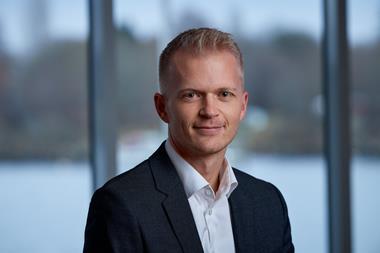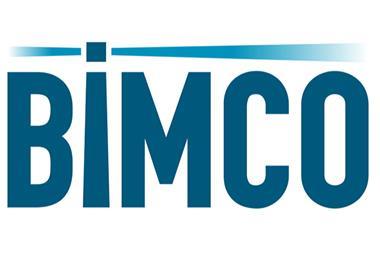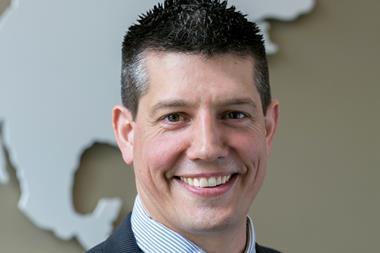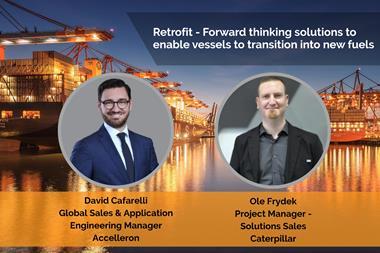A vessel concept presented by Kongsberg Maritime at The Motorship Propulsion & Future Fuels Conference aims to entice bulk carrier owners reluctant to invest in alternative fuel technology.
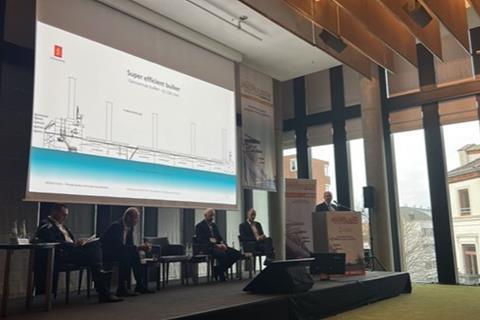
Amid uncertainty about which alternative fuels will be available and when, Oskar Levander, Vice President Strategy & Business Development, I&E, Kongsberg Maritime, catered to an audience of bulk carrier operators with an efficiency-first concept integrating several energy efficiency technologies. The aim, he said, was to show that deep reductions in energy intensity were possible without installing alternative fuel technologies.
Targeting a fuel consumption reduction of 40% compared to best-in-class modern vessel designs, a theoretical 82,000GT Kamsarmax bulker was fitted with four energy efficiency solutions: five rotor sails for wind-assisted propulsion; an air lubrication system to reduce hull resistance; an integrated energy management system to optimise fuel use; and a hull skater cleaning system to minimise drag.
The bulk carrier was able to achieve a 40% fuel reduction with a slight reduction in speed, ensuring compliance with IMO’s Carbon Intensity Indicator until 2037. Beyond that point, Levander noted that drop-in carbon-neutral fuel could be added to the fuel mix to keep step with further required improvements. Given the early investments in fuel efficiency, the vessel’s relative fuel cost would be around 60% lower than for the base vessel, which would require more carbon-neutral fuel much earlier to meet targets.
The case study highlighted how both operational and design factors would need to evolve for lower carbon shipping. In particular, the standard hull form would need to be optimised to take account of energy efficiency opportunities, said Levander. In this example, a wider, lower draught vessel with a flatter hull bottom initially added to resistance but was more than compensated for by improved functioning of the air lubrication system.
Energy efficiency was a core focus of the first day of proceedings at the conference, with in-depth explorations of several alternative fuels planned for the second day.

